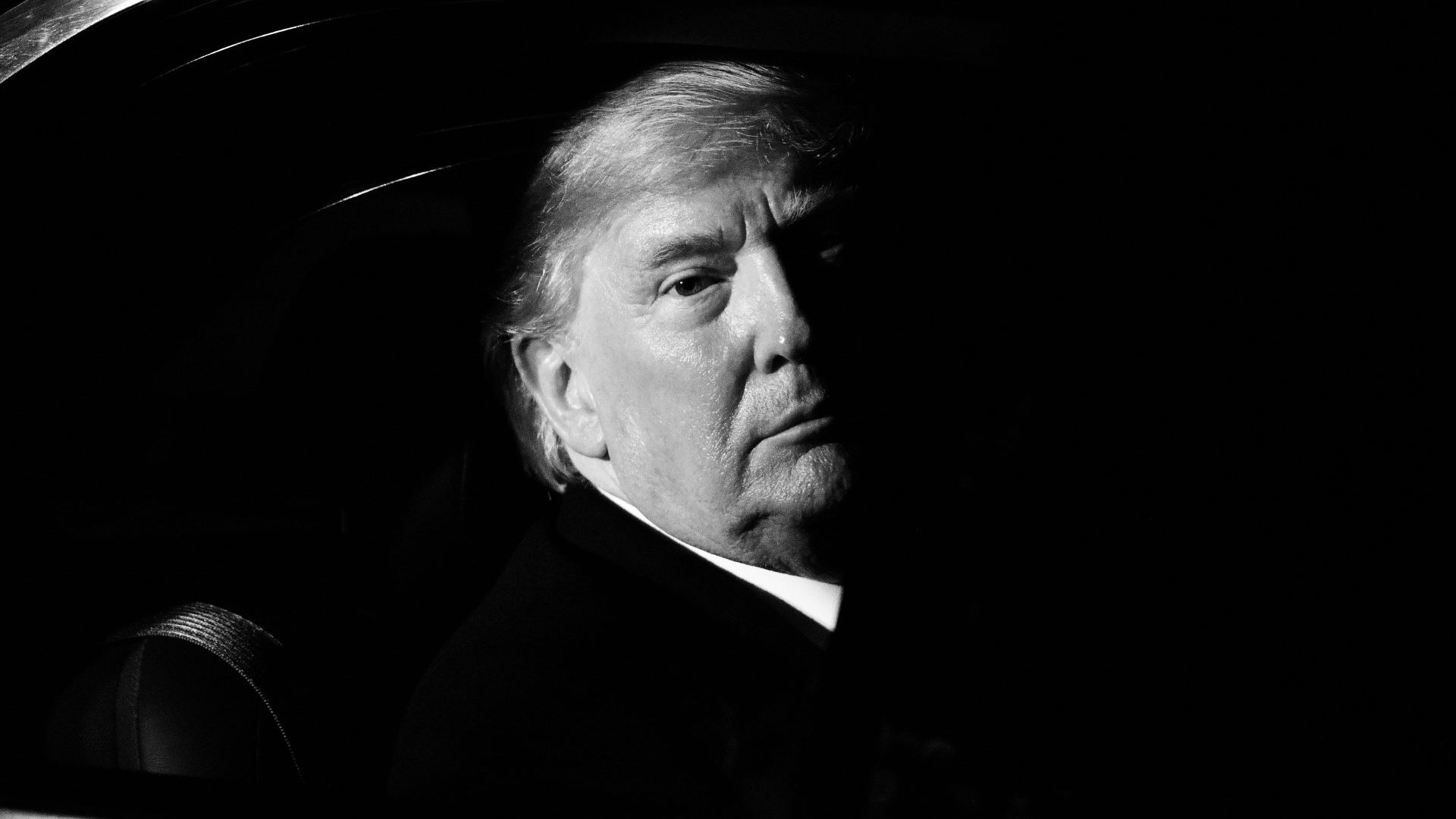Believe it or not, I really didn’t intend to be the New European’s Pollyanna. I’m actually a pessimist by nature. But since everyone else has gone full Cassandra about Kamala Harris’s chances of winning the presidency, I guess I just think someone should say that there are a few reasons to be hopeful, too.
I’ll admit, it’s not been a great couple of weeks. A tightening in polls, resulting in a shift of the aggregated averages towards Trump in the past week, has brought back the clouds of doom and despair among the more terminal politics-junkies that had partially lifted when Kamala Harris replaced Joe Biden as Democratic candidate.
By October, the New York Times average showed Harris ahead by only one point now, down from three back in September. A nationwide CNBC poll conducted in mid October puts the race now in a dead heat, 48%-48%.
Worse, Trump dominated 42% to 24% on the question of who respondents felt would make them better-off financially. He also led on immigration, and crime, though Harris was ahead 31 points on abortion, and 60 on climate change.
The despair is partly a mass trauma response: the way Trump massively outperformed the polls in 2016 is burned into our collective memory. But at this point in the 2020 race, Biden led by almost eight points, and then once again, remember, Trump overperformed – though not enough to win, he lost the popular vote by only four points on the day.
There are some worrying signs too from early voting. In Arizona, state polling averages show Trump ahead two points; among 833,899 mail-in and early votes cast, registered Republicans lead 42% to 36%.
In Nevada, where Harris appeared to be surging ahead the picture is even worse. With 400,000 votes (about 20%) cast, in Clark County – home of Las Vegas – the Democrats’ traditional firewall appears to have collapsed completely under what Nevada politics maven John Ralston is calling a “tsunami” of rural Republican votes that put Trump ahead by almost five points.
At this point in previous elections, according to Ralston, Democrats led in Clark by 40,000 votes or more; currently, their lead is just 5,000. On these numbers if Harris wins independents by ten points, which seems unlikely, she will still lose the state.
Mail-in ballots were key to Biden’s victory in 2020, partly because Trump’s messaging actively discouraged early voting and partly because of the pandemic. But exactly what early vs in-person voting will look like now, in the first presidential election post-Covid, is hard to parse.
With that extremely strong caveat in mind, take a deep breath because in Pennsylvania the early voting signs are… OK, actually. With 1,123,509 mail-in and early votes cast so far, Democrats lead by 34 points – less than at this point in 2020, but still a reasonable margin.
Almost twice as many registered Democrats requested mail-in ballots than Republicans (59% to 30%), despite a $10m effort by the GOP. Bear in mind, Pennsylvania has 19 electoral college votes – more than Nevada and Arizona combined.
In Michigan, despite Democrats losing ground among Arab-Americans in places like Dearborn as well as on the progressive left in general, because of the war in Gaza, registered Democrats have cast 52% of the early votes vs 38% for Republicans. Georgia, where almost two million people have already cast their vote, doesn’t register voters by party affiliation.
But while 39%of ballots so far have been cast by over-65s, a Trump-leaning demographic, they were also cast significantly more by women, 55% to 45%. Nationally, Democrats hold a roughly 16-point advantage with women while men skew 11 points the other way.
Among younger voters, that gap is even starker: 69% of 18-29-year-old women favour Harris over Trump. If women turn out in significant numbers, that’s the ball game.
North Carolina was two weeks late sending out its mail-in ballots, because a court had to issue an order to remove RFK Jr from the ballot after he dropped out of the race. Hurricane Helene added a whole extra layer of confusion, damaging polling stations, further depressing early vote totals and raising issues of voting accessibility – but Trump-leaning rural areas were among the hardest hit. It is hard to tell what the knock-on effects of the storm will be, but current averages show a statistical dead heat.
White non-college-educated voters, a group that heavily favours Trump, have declined as a share of the overall population by two percent since 2020, while college-educated white and minority demographics have each increased by a percentage point each. This is a significant shift, and it’s been even more pronounced in Michigan and Wisconsin, where the non-college white percentage fell three points.
In Georgia and Arizona, too, the minority vote-share has increased, though Trump has made some inroads with young Latino and Black men. A sizable cohort of Gen Z voters have also now entered the electorate, and Harris leads 64% to 32% among 18-to-29-year-old women, according to Harvard Kennedy School’s Institute of Politics, who also spotted a “significant enthusiasm gap,” with 74% of young Democrats saying they will definitely vote compared to 60% of young Republicans.
Harris has also colossally out-fundraised her opponent – by the end of August she had raised over $335m, almost ten times the measly $28m raised by Trump – and the Republican ground game has suffered from poor organisation. Outside groups, especially Charlie Kirk’s Turning Point USA, have tried chaotically to move in and pick up the slack, and Elon Musk is also now all-in on backing the Trump campaign. But neither have much experience with national canvassing or get-out-the-vote operations.
TPUSA and Musk’s America PAC have spent $46m between them on canvassing, another $12m on direct mail, and $9m on digital ads, but Harris has ten times the number of actual state campaign operatives he does.
Trump’s personal favourability polling still lags behind Harris, 43% to 46%. And we do not yet know what impact – if any – will come from a fresh wave of Trump scandal, with his former White House chief of staff John Kelly revealing in an interview that Trump had praised Adolf Hitler. I can’t believe I’m typing “it’s too early to tell if praising Hitler will prove to be an electoral negative,” but I guess here we are.
There’s reason to be slightly skeptical of the “flipped race” narrative too. The Washington Post, which shamefully dropped its endorsement of Harris after pressure from owner Jeff Bezos, is experimenting with a polling model that takes results only from the top tier of reliable pollsters/ That model still shows Harris leading nationwide and ahead in Michigan, Pennsylvania, and Wisconsin, with Trump leading in Arizona, Georgia and Nevada.
A couple of other factors might also help. In Wisconsin, the state Supreme Court ruled in September that RFK Jr’s name will stay on the ballot even though he has dropped out of the race, and he also remains on the ballot in Michigan. Five-way polling doesn’t get headlines like head-to-head matchups, but an Economist/YouGov poll released October 23 put Harris three points ahead of Trump nationally, 49 to 46, when Kennedy and Green Party candidate Jill Stein are also in the mix.
Kennedy, who spent September begging crowds in Michigan not to vote for him, is appealing the Wisconsin ruling to the US Supreme Court, but since voting has already begun time has likely run out.
Democrats historically are significantly more likely than Republicans to respond to telephone polls, a phenomenon called “response bias” that pollsters know about and weight their data to compensate. But data from the Polarisation Research Laboratory suggests this may be changing – a trend that has mystified analysts but might mean Harris support is currently under-weighted.
Similarly, NBC analyst Steve Kornacki points to the gap between 2020 polls of white non-college educated voters (Trump +17) and his eventual share (29), noting that the 2024 polls are much closer to the 2020 result, implying pollsters have changed their model to give more weight to this demographic.
It is worth remembering it was the Democrats who outperformed polls in the 2022 midterms. They did so again in a raft of special elections last year, and again in the February special election for disgraced New York congressman George Santos’ seat by seven points more than pollsters predicted.
I get it – I was traumatised just like everyone else was by 2016. We’re all ready for Trump to outperform the polling again, like in 2016 and 2020. We’ve had to psychologically prepare ourselves for the worst.
The sheer fact that it’s currently a nailbiting statistical tie between the flawed but ultimately normal human politician and, again, the guy who is going around literally fucking telling people he’s the pro-Hitler guy… is a pretty bad sign for the future of humanity already. I get the impulse to submit to despair.
I’m not saying everything is going to be fine. It’s not. It’s going to be tight – it’s clearly going to be extremely, horribly, appallingly tight.
But I think it’s worth saying I don’t think it’s quite time for all this hopelessness quite yet. Who knows – maybe for once the worst possible thing won’t happen this time, and we’ll finally skip out of the Darkest Timeline that we’re all starting to believe we’ve been living in for the last eight years.
And if he does win, at least we’ll know for sure.










